Agricultural Desalination Water
Home » Water Desalination System » Agricultural Water Desalination
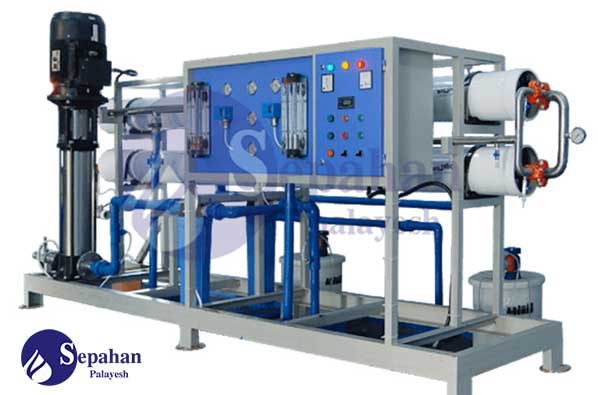
Agricultural desalination water uses a membrane filter to pump and filter water at the molecular level. Technically, agricultural desalination is similar to industrial desalination, with the main difference being the output water of the device. This article provides information about this type of water desalination, including its features, purchasing conditions, and price.
What is agricultural desalination water?
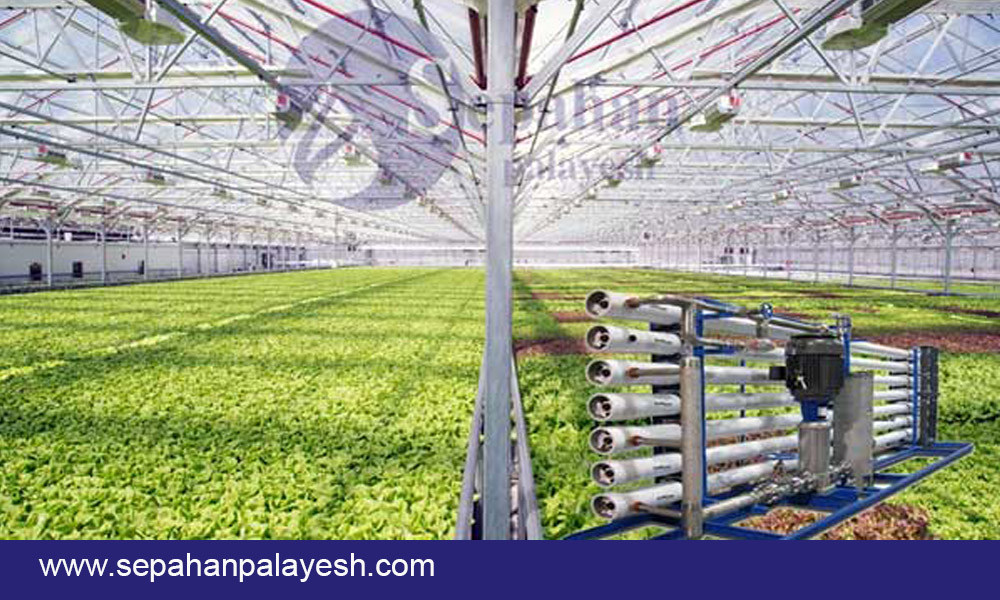
The agricultural desalination water filters water at the molecular level using a membrane filter that most solids cannot pass through, resulting in almost pure water.
The reverse osmosis system depicted above is designed for a large greenhouse, employing the same principles as industrial water purification systems.
One of the main challenges of freshwater scarcity is the excessive extraction of groundwater aquifers, particularly for agricultural use, leading to saltwater intrusion. However, there is an effective method for transforming unusable and saline groundwater into valuable water for irrigation.
Currently, agricultural reverse osmosis devices are widely employed in almost all countries to grow plants using highly saline water without harming the soil.
Reasons for using water desalination devices in gardening
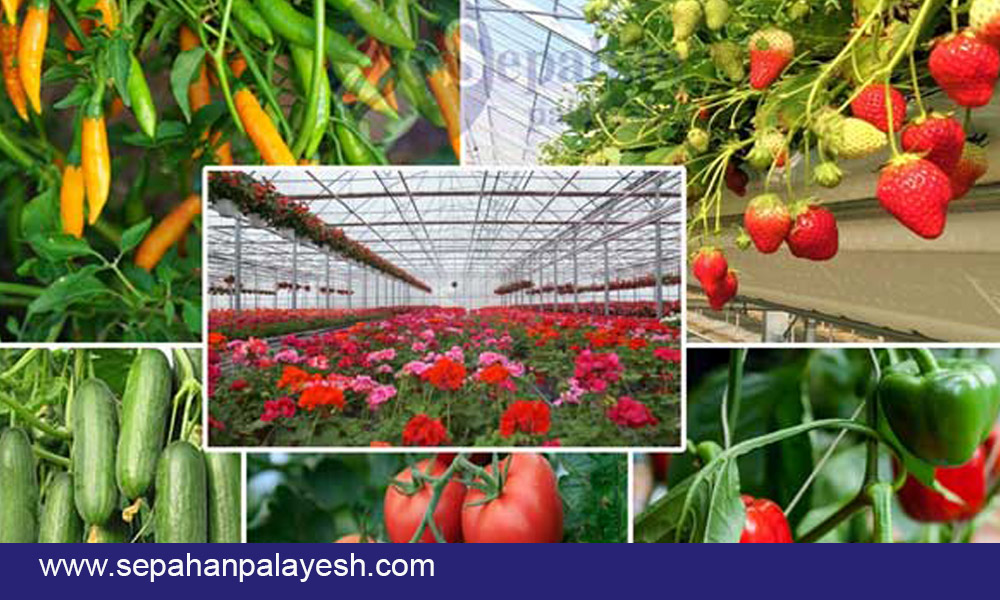
The agricultural desalination water system provides water for agriculture and greenhouses. These devices reduce water salinity, making the water favorable for cultivation.
Agricultural desalination water systems are less sensitive than drinking water desalination systems. Water in the Agricultural industry comes from seawater or well water, with dissolved solids reaching up to 500 mg/liter. This kind of water desalination device is required to remove the water salinity.
Advantages of agricultural water purifier device
Water quality is crucial in the agriculture and plant breeding industry as it directly affects the photosynthesis process in plants. Salty and low-quality water can clog the plant’s stomata, reducing flowering, growth, and product loss. Therefore, it is vital to use agricultural desalination water.
Agricultural desalination water increases agricultural and greenhouse product quality by providing high-quality water. The reverse osmosis system in agriculture is also used for injecting chemical fertilizers, hydroponic cultivation, and fogging.
What is the difference between industrial and agricultural desalination water?
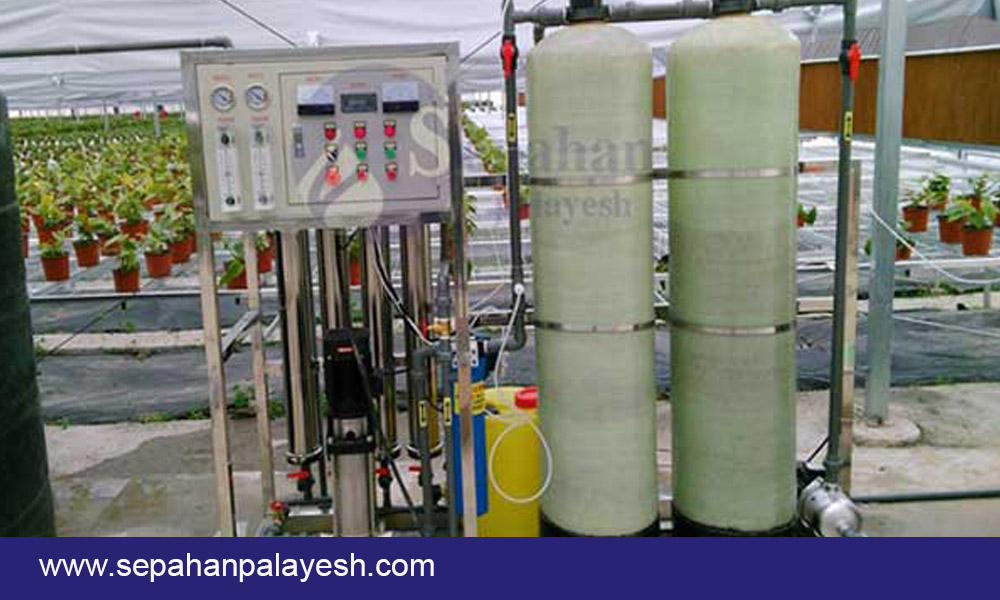
Technically, agricultural desalination water is the same as industrial desalination, and their main difference lies in the output water of the device.
The output water from the industrial water desalination device has a low salt content (TDS<300), while the output water from the agricultural desalination water device falls in the range of (500<TDS<2000).
In an agricultural purification device, a higher pressure can be applied to the membrane to produce water with better quality. On the other hand, in industrial type, the working pressure should be adjusted to minimize the total dissolved solids (TDS) and maximize the water output from the membrane.
Features of an agricultural desalination water device
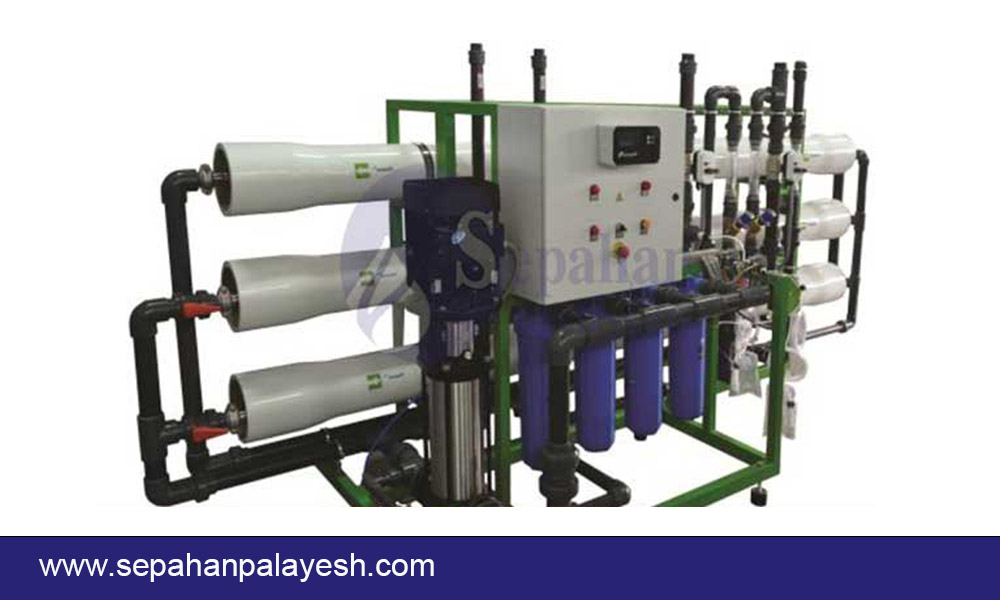
An agricultural desalination water device can remove contaminants in water, such as iron, manganese, calcium, magnesium chloride, and chlorine. It can work for long hours while maintaining a constant water output.
Since farmers use well water with almost high hardness, having a high-pressure and low-pressure steel pump are features of a quality desalination water device.
Another feature of an agricultural desalination device is using pre-treatment and a double sand filter or large sand filter. It is necessary because the inlet well water contains high impurities that should not enter the membrane. In contrast, industrial desalination plants typically have relatively cleaner inlet water.
Applications of agricultural desalination water device
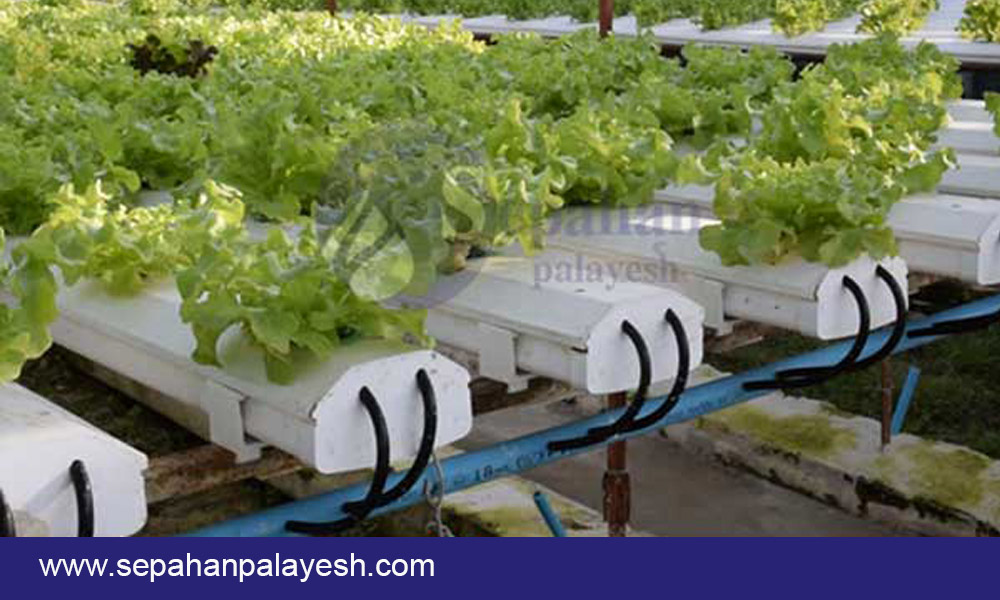
The main uses of agricultural desalination water include the following applications:
- Hydroponics: The hydroponic systems for producing hydroponic food solutions. The water produced by the desalination water device removes ions from the water source. Reverse osmosis (RO) consumes a large volume of water, with only about half of the incoming water converted to treated water, and the remaining water exits the device in a more concentrated form.
- PH- adjustment: A reverse osmosis (RO) system separates water molecules from other water-soluble solids (such as carbonates). Since carbonates act as buffers, they can also adjust the pH of the water.
- Producing water with low electrical conductivity (EC): Producing low EC water for growing tomatoes, cucumbers, vegetables, limes, fruit trees, roses, and ornamental flowers for export and use in fogging devices.
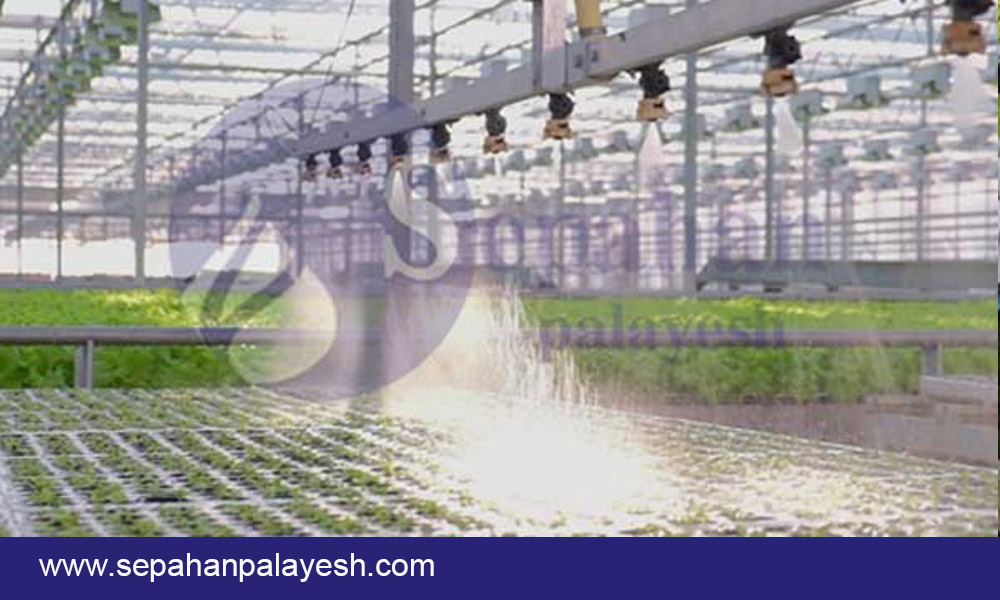
Influential parameters on the device price
The main parameter is the capacity of the desalination water device. Usually, the capacity of these devices is more than 25 cubic meters per day.
Another influencing parameter is the quality of elements used in the device.
These elements include:
- Power and brand of desalination water device pumps:The best brands are Grand Fos, Levara, Attack, Abara, Danfos, CNP, and LEO.
- Low-pressure piping made of Upvc.
Turkey’s Pimtash brand is superior to Iranian pipes regarding price and quality. - High-pressure piping: Usually, 304 grade 10 to 30 steel pipe is an appropriate choice for well water, depending on the working pressure.
- The pressure vessels used in the water desalination device are high-pressure vessels rated at 300-45-450 PSI, capable of withstanding pressures up to 30 bar. Some reliable brands for these pressure vessels are Codeline Hydrotech, Pyro (made in China), and Codeline (made in America).
- Factors such as steel or iron chassis, linear pressure gauge or panel, manual electrical panel or PLC, precision instruments and recycling valves, automatic or manual CIP system, etc., can significantly impact the final price of the device.
Important points in buying agriculture desalination water
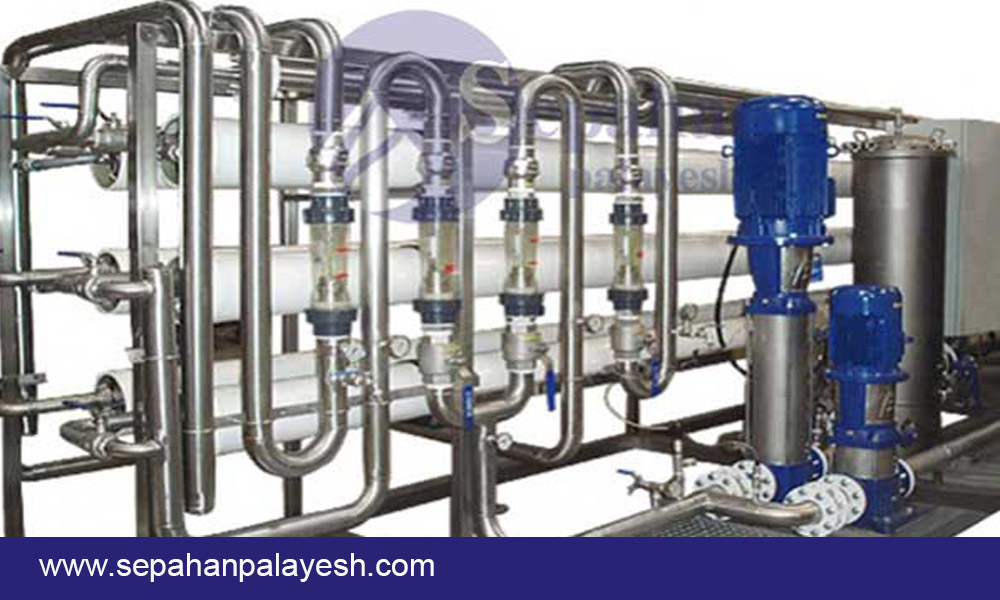
Activated carbon filter
Thin-film composite (TFC) membranes are commonly used. Since chlorine can degrade TFC rapidly and lead to premature system failure, it is recommended to use an activated carbon filter.
Sand filter
water pre-treatment or a sand filter removes suspended particles up to 100 microns and prevents minerals from reaching the system. Without it, membranes are damaged sooner and cause increased repair and maintenance costs. So, galvanized or fiberglass sand filters based on the water output volume are the best in this case.
Device effluent
Generally, 4 gallons of water are required to produce 2 gallons of fresh water. This method might not be suitable in areas with water usage restrictions. In newer systems, some wastewater is recycled back into the device, reducing the overall water usage.
RO effluent with TDS < 5 is nutrient-poor and highly corrosive, especially for metal piping. Water treated by reverse osmosis (RO) should not be transported through galvanized or copper pipes. UPVC pipes are the best for pipes, droppers, and mine foggers.
RO device size
The size of the RO system varies with the amount of water it produces. Most systems are rated based on the number of gallons of water the system produces per day (GPD). Home systems produce 15-50 GPD of water, and Industrial models produce 1,000 gallons or more. The minimum size of a livestock RO device is 1.4 meters long, 0.8 meters wide, and 2 meters high.
Water storage
These systems can produce large volumes of water, ranging from a few thousand gallons to over a few hundred thousand gallons per day. A storage facility is necessary for large water quantities, leading to increased investment costs.
